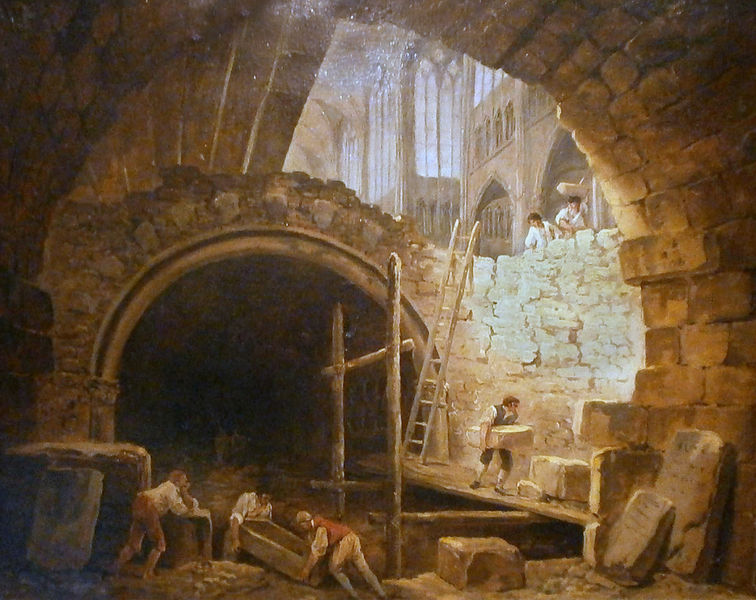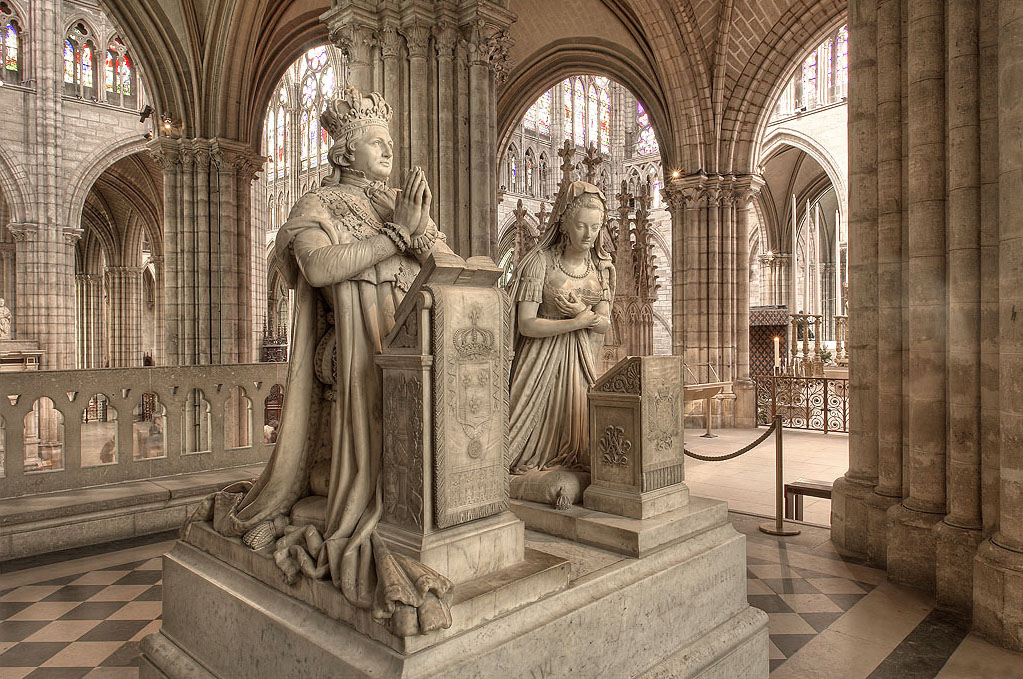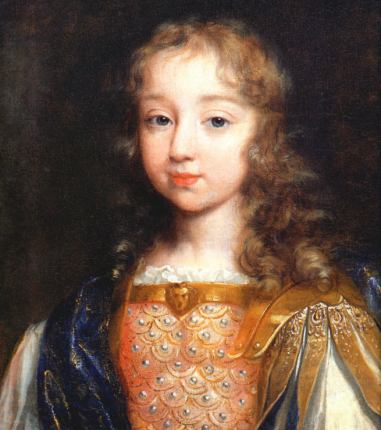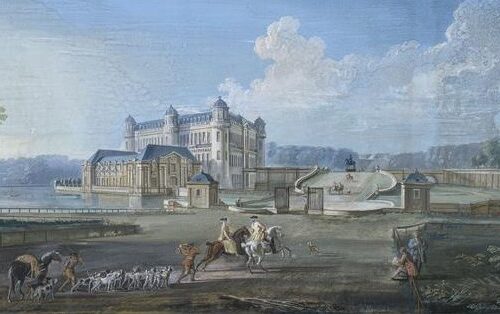The Plundering Of The Royal Tombs of Saint-Denis
The Basilique royale de Saint-Denis has been the burial side of French Monarchs for centuries. Saint Denis, after which the Basilique was named, is the Parton Saint of Paris. You can find images of him carrying his head all over the city and France.

Saint Denis, or Dionysius, is believed to have been the very first Bishop of Paris. He was sent from Italy to what is France today in order to bring the Christian faith to them. Not everyone agreed with this plan. Saint Denis and his companions were arrested and beheaded on one of the highest hills in the Paris area. Today it is known as Montmartre, back then it was most likely a druidic holy place. The story goes that, after being beheaded, Saint Denis picked his head up and walked a whole ten kilometres with it in his arms, while preaching a sermon. On the very spot Saint Denis (finally) collapsed and died, thus naming it and the whole area surrounding it, a small shrine was placed, which over the centuries developed into the Basilique royale de Saint-Denis.
Since the time of Hugues Capet (940/41-996), the first King of the Franks of the House of Capet, the Basilique has been the burial-place of nearly every King of France from the 10th to the 18th century. But not just the Kings were buried at Saint-Denis, also Queens, Princes and Princesses, their children and members of the high nobility.
One of the first people to be buried at Saint-Denis, apart from the actual Saint, seems to be Aregund (515/520–580), the wife of French King Chlothar I.
In 17th century France, Saint-Denis was not yet a part of Paris, as it is today. It was a small village to the north of it, over which the large Basilique hovered. For Louis XIV, it was a place he saw more often than he probably wanted. In 1643, his father Louis XIII was buried there. His uncle Gaston d’Orléans followed 1660. In 1662 and 1664, two of Louis’s daughters found their resting place at Saint-Denis. Anne d’Autriche joined them in 1666 and in 1669, they were joined by Henriette Marie de France, wife of Charles I of England. Henriette Marie’s daughter Henriette d’Angleterre, aka Minette, followed in 1670. In 1671 and 1672 another three of Louis XIV’s children, Philippe Charles, Marie Thérèse and Louis François, were put to rest there. As well as Gaston d’Orléans’ second wife Marguerite de Lorraine, a Princesse de Lorraine. Marie-Thérèse, the wife of Louis XIV, was buried there in 1683. Seven years later, in 1690, they were all joined by Marie-Anne de Bavière, Dauphine of France. Philippe de France, Louis XIV’s brother, followed them in 1701. In 1705, Louis de France, Duc de Bretagne, the first-born son of the Petit Dauphin, and in 1711 Le Grand Dauphin, son and heir of Louis XIV, followed. The year 1712 was a busy year at Saint-Denis, Marie-Adélaïde de Savoie, the new Dauphine of France and her husband Louis de France as well as their youngest son, the Duc de Bretagne, were buried in the Basilique. Charles de France, Duc de Berry, joined in 1714 and in 1715, Louis XIV himself was buried there. (That is quite a list, but still not everyone that was buried at Saint-Denis during the time of Louis XIV. Several of Monsieur’s children were as well, along with Princes of the Blood.)

After the death of Louis XIV, Saint-Denis became the resting place of Liselotte von der Pfalz, Marie Louise Élisabeth de Bourbon-Orléans, Louis XV and his daughters, the sisters and brothers of Louis XVI, Maria Leszczyńska and many others.
The Basilique royale de Saint-Denis was meant to be their final resting place. No-one thought it possible that it could not be so…. until 1793. When outside the old walls of Saint-Denis the French Revolution was raging. Until this point the Revolution did not just create much bloodshed and chaos, it had also destroyed a lot of statues and signs of Kings all over France. Everything that reminded the leaders of the Revolution of the Ancien Régime, the time from 1589 to 1789. Before the Revolution, Ancien Régime meant not only just the reign of the Bourbon Kings, but something like ‘the good old time‘. The time of Le Bon Roi Henri IV, Louis XIII, Louis XIV and Louis XV. A less complicated time, a better time.
As the Revolution started to rage, the meaning of Ancien Régime was turned from something positive into something negative. Everything, every public sign, of the Ancien Régime had to be destroyed. Saint-Denis, this large and old church, was not safe from the wrath of the Revolution either.
On July 31 in 1793 it was decided that all of the Royal Tombs must be opened and destroyed. Not only because of said reminders of the Ancien Régime, but also because the Revolution was in dire need of money and suspected there could be a pretty penny hidden in the tombs in form of jewels. The carnage started shortly after. Between August 6 and 10, many of the larger monuments were removed, along with several statues, and some of the very old graves were opened. Among them the graves of Philippe III de France, Pepin the Short, the Queens of France Isabelle d’Aragon and Constance de Castille, and Louis VI.
The most severe destruction occurred in October. On the 15th, a day after the official trail of Marie Antoinette began, the tombs of Henri IV, Louis XIII, Marie de Médicis, Anne d’Autriche, Marie-Thérèse d’Autriche, Gaston d’Orléans, Henri de La Tour d’Auvergne, and Louis XIV were opened. As they were opened, the heavy wooden outer caskets and the inner lead caskets, everything that was considered to be of value, like shoe buckles, rings, gems,necklaces, earrings, gold and silver thread of garments, was removed and confiscated.

Whatever had remained of those inside, was collected and tossed into a large pit outside, where it was covered with slaked lime. The only one who did not suffer this fate was Henri de La Tour d’Auvergne, the Great Turenne, his remains were brought to Jardin des Plantes and later to the Hôtel des Invalides. (by Napoleon’s orders)
Louis XIV’s body was found to be fairly intact, and so was that of his grandfather Henri IV. The latter, since the Parisians still quite liked him, was put on display in his open lead casket for several days, before he was tossed into a mass grave. (Where is head went apparently missing.) The Revolution had a use for the lead caskets as well, they were melted down, partly for ammunition.
On October 16, Henriette Marie de France, Louis XV, Charles V, Jeanne de Bourbon, and Philippe de France, Duc d’Orléans, shared their fate. Between October 17 and 25, the tombs of Marguerite de Valois, Henri II, Catherine de Médicis, François II, Henri III, Louis X, Hugues le Grand, Philippe V and Philippe IV, Louise-Marie de Bourbon and many others were opened.
The whole thing went on until January 1794, but luckily not all of the funerary monuments were completely destroyed. Some, that were considered especially skillfully made, were transferred to the Musée des monuments français. Those are the ones we can still see today.
The end of Maximilien de Robespierre brought the destruction at Saint-Denis to an end as well and during the Bourbon Restoration, in 1815, the mass graves outside the old church were opened again. This time to put the tossed-away remains to proper rest again. It was now, of course, impossible to tell who is who, thus all remains that were found, were placed in a ossuary. Louis XVI and Marie Antoinette joined their relatives as well. Their remains had also been tossed into a mass grave and were now placed where they belong, at Saint-Denis.

From today’s perspective, the opening and plundering of the tombs can be classified as cultural barbarism and vandalism. Many cultural treasures, first-class cultural objects, especially from the French Middle Ages, fell victim to looting and are now forever lost. The remains of Kings and Queens were tossed away, like trash, some of them were even sold as macabre souvenirs. Even if one is no fan of the Monarchy, human remains, no matter if King or peasant, should always be treated with respect.
(If you happen to be in Paris make sure to visit Saint-Denis. It is easily reachable by metro. The atmosphere there is breathtaking. It is a place were only few tourists go, so you will have the whole Basilique almost to yourself. The Bourbon crypt is open to the public and you can see the monuments of Louis XIV and Henri IV and many others. A black plate marks the spot of the ossuary, with the names of all its inhabitants written on it. When it is sunny, the colourful windows will reflect on the marble floors. It is spectacular.)



